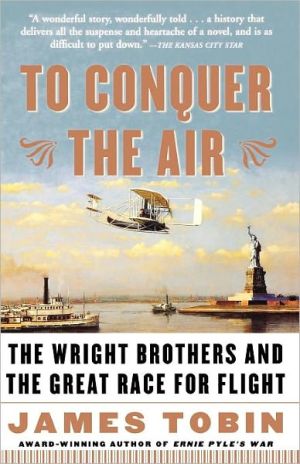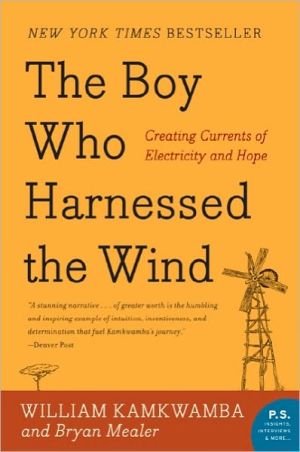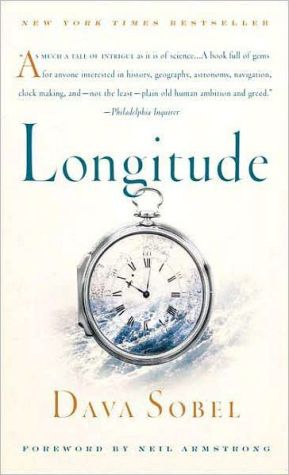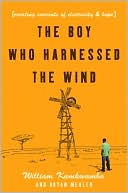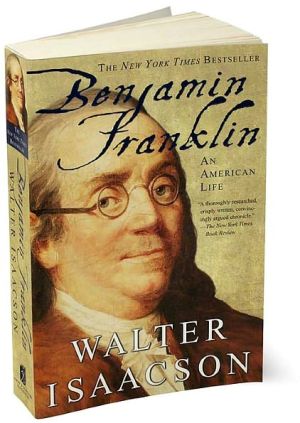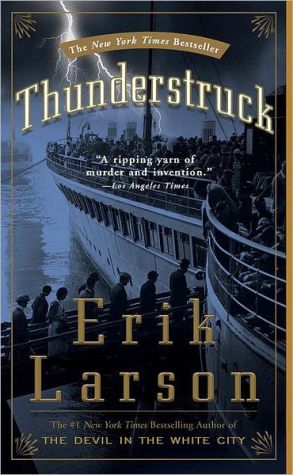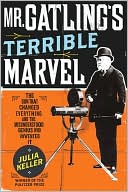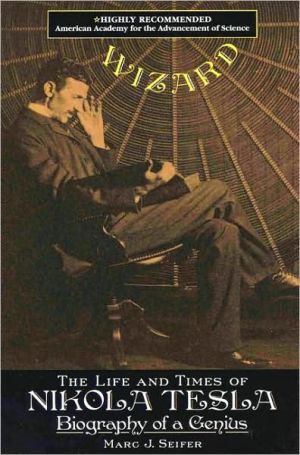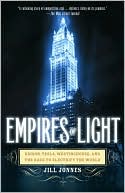To Conquer the Air: The Wright Brothers and the Great Race for Flight
Award-winning author James Tobin has at last penned the definitive account of the inspiring and impassioned race across ten years and two continents to conquer the air. For years, Wilbur Wright and his younger brother, Orville, experimented in obscurity, supported only by their exceptional family. Meanwhile, the world watched as Samuel Langley, armed with a contract from the U.S. War Department and all the resources of the Smithsonian Institution, sought to create the first manned flying...
Search in google:
Award-winning author James Tobin has at last penned the definitive account of the inspiring and impassioned race across ten years and two continents to conquer the air. For years, Wilbur Wright and his younger brother, Orville, experimented in obscurity, supported only by their exceptional family. Meanwhile, the world watched as Samuel Langley, armed with a contract from the U.S. War Department and all the resources of the Smithsonian Institution, sought to create the first manned flying machine. But while Langley saw flight as a problem of power, the Wrights saw a problem of balance. Thus their machines took two very different paths--Langley's toward oblivion, the Wrights' toward the heavens--though not before facing countless other obstacles. With a historian's accuracy and a novelist's eye, Tobin has captured an extraordinary moment in history. To Conquer the Air is itself a heroic achievement. Publishers Weekly This extraordinarily well-written and deeply nuanced work is the best of the recent spate of books celebrating the Wright Brothers and the 100-year anniversary of their invention of the airplane. Award-winning biographer Tobin (Ernie Pyle's War) provides a detailed yet truly exciting tale of the brothers' lifelong effort to stand "against the wave of popular doubt about the possibility of human flight." The book's strength resides in Tobin's careful depiction of two main elements of the Wright story. First, Tobin provides the fullest and most sympathetic account yet written of the close-knit Wright family and the impact of its ethic-"the Wrights versus the world"-on the brothers, at the same time that he recaptures the personal qualities that were forgotten after they became aviation icons. ("Will had a devastating dry wit, but there was more fun in Orville.") Second, Tobin is stunningly effective in presenting the intertwining lives of the brothers and an amazing cast of friends and competitors, including such inventors as Samuel Langley, secretary of the Smithsonian and creator of the doomed Aerodrome, and his friend and fellow flight enthusiast Alexander Graham Bell; Octave Chanute, one of the brothers' earliest supporters; and Glenn Curtiss, the brothers' main competitor. Tobin's final chapter, which details Wilbur Wright's historic flight in 1909 circling Manhattan, is a definitive account of the crowning final triumph of the Wrights' career. (Mar.) Forecast: The best yet of all the books celebrating the Wrights' 100-year anniversary, this should stand as the definitive account of their life and times, and will sell accordingly. Copyright 2003 Reed Business Information.
Prologue: Decoration Day, 1899\ His father and sister had gone to Woodland Cemetery to plant flowers at the grave of his mother. His younger brother was busy elsewhere. It was a holiday, and the house was quiet. He could take care of the letter he had been meaning to write.\ He sat, took out paper and pen, and wrote:\ The Smithsonian Institution Washington. \ Dear Sirs:\ I have been interested in the problem of mechanical and human flight ever since as a boy I constructed a number of bats of various sizes....My observations since have only convinced me more firmly that human flight is possible and practicable. It is only a question of knowledge and skill as in all acrobatic feats.\ \ He was thirty-two years old and unmarried. He was lean and bald. His lips were thin and he usually held them tightly shut; he may have been self-conscious about his teeth, which had been smashed in a hockey game years ago. His ears flared. Only his eyes saved him from outright homeliness. Ten years later, when he was one of the most famous men in the world, reporters had trouble getting him to say much about himself. So they remarked on his eyes as indicative of the character within. "This man is strange and cold," one said, "but of a coldness that is smiling and sympathetic....The countenance is remarkable, curious — the head that of a bird, long and bony, and with a long nose...the eye is a superb blue-gray, with tints of gold that bespeak an ardent flame." He was a shrewd observer of people and of nature. Yet he once told his sister that "my imagination pictures things more vividly than my eyes."\ The subject of his letter was not the sort of thing he would mention casually to a neighbor. On this block of Hawthorn Street, on the west side of Dayton, Ohio, the houses stood so close together you could name the song somebody was playing on the piano three doors down, and make a fair guess who was playing. Any news traveled fast, and the news that somebody hoped to fly like a bird would travel faster than usual. Aspirations here tended toward the sensible. The neighbors included four carpenters, two day laborers, a machinist, a printer, a motorman, a market vendor, an insurance salesman, three widows, and two clergymen. One of the clergymen was the young man's father — quite a prominent man, a bishop of the Church of the United Brethren in Christ, a stout widower who kept house with his schoolteacher daughter and two of his four grown sons. Their home was number 7, second from the corner of Hawthorn and West Fourth.\ "When I saw this house," a visitor said later, "I felt its pathetic preeminence in a street of meager homes." It was narrow but it extended way back on the lot, with white clapboards and green shutters. At the front was the parlor, with a slant-top writing desk; a cherrywood rocking chair with horsehair upholstery; a chaise longue and a settee. In back of the parlor was the sitting room, dominated by a tall cherry bookcase, its contents suggesting a family of enthusiastic readers with broad interests, from Charles Dickens and James Fenimore Cooper to a six-volume History of France and Charles Darwin's Origin of Species. Next came a spacious dining room, with a long sideboard, a drop-leaf table, and six walnut chairs. At the rear of the house was the kitchen. Upstairs there were four small bedrooms. Out in back was a "summer kitchen" — a detached shed — and an outhouse. Along the front and left side of the house there was a long porch. The young man and his brother had built it in 1892. They kept it simple, leaving off the usual gingerbread trim.\ The young man continued his letter:\ Birds are the most perfectly trained gymnasts in the world and are specially well fitted for their work, and it may be that man will never equal them, but no one who has watched a bird chasing an insect or another bird can doubt that feats are performed which require three or four times the effort required in ordinary flight. I believe that simple flight at least is possible to man and that the experiments and investigations of a large number of independent workers will result in the accumulation of information and knowledge and skill which will finally lead to accomplished flight.\ He once remarked that for a person endowed with greater gifts than others, but lacking in the push needed for conventional success, there was "always the danger" that he would "retire into the first corner he falls into and remain there all his life."\ This is what had happened to him, and the letter was part of his effort to get out of his corner. He possessed extraordinary gifts. Yet he had lived more than half the average span of an American man of his time without doing or making anything he could call his own. He lived in his father's house. The woman in his life was his sister. The children he loved belonged to his older brothers. He gave most of his time to a storefront business without caring for business or money. His only advanced education had come from his father's books. He had put his powerful mind to work in only one cause — an obscure church controversy, also his father's. But he did not even have his father's faith.\ He was "an enthusiast," he wrote:\ ...but not a crank in the sense that I have some pet theories as to the proper construction of a flying machine...I am about to begin a systematic study of the subject in preparation for practical work to which I expect to devote what time I can spare from my regular business. I wish to obtain such papers as the Smithsonian Institution has published on this subject, and if possible a list of other works in print in the English language...I wish to avail myself of all that is already known and then if possible add my mite to help on the future worker who will attain final success. I do not know the terms on which you send out your publications but if you will inform me of the cost I will remit the price. \ Yours truly,\ Wilbur Wright\ \ By June 1, traveling by rail, the letter arrived in Washington, where it was carried to the turreted, red-sandstone headquarters of the Smithsonian Institution, on the southern edge of the long green known then as Smithsonian Park. There the letter was opened, sorted with others of its type, and taken through echoing halls to the office of Richard Rathbun, second in command at the Smithsonian, whose duties included the oversight of the Institution's correspondence with scholars, scientists, and the merely curious in every part of the world.\ Rathbun, an expert on marine invertebrates, handled many such inquiries each week. Like Wilbur Wright, people everywhere regarded the Smithsonian as a fountainhead of scientific and cultural information, much of it published in the Institution's own periodicals. A man once wrote to ask for all Smithsonian publications on geology, biology, botany, the National Museum, the Bureau of American Ethnology, Indians, International Exchanges, the National Zoological Park, the Astrophysical Observatory, "and any other interesting subjects." He was told that compliance with his request would require the shipment of several thousand volumes. With the financial support of the U.S. Congress and a host of private benefactors, the Smithsonian was the best-endowed, most prestigious institution of science, culture, and learning in the entire nation. Its exhibits, repositories, storehouses, laboratories, and libraries were known throughout the world, and all of these existed to fulfill the terms of the 1846 will of the Institution's founding benefactor, the Englishman James Smithson, who had called for an American institution to foster "the increase & diffusion of knowledge." Every legitimate question was to receive a careful answer. So people wrote by the hundreds every year.\ The letter from Dayton would have occasioned no special notice in Rathbun's office but for one salient characteristic. It raised the question of mechanical flight. This was a topic of consuming interest to the fourth secretary of the Smithsonian himself, Samuel Pierpont Langley.\ In public stature and prestige, Langley was the most prominent scientist in the United States. His best friend was Alexander Graham Bell, the inventor of the telephone. Langley was a frequent guest at the White House. He dined regularly with the historian Henry Adams, grandson and great-grandson of presidents; and John Hay, who had been personal secretary to Abraham Lincoln and was now secretary of state. Langley corresponded with the likes of Rudyard Kipling and the philosopher Charles Sanders Peirce; as a young man he had listened for hours to the philosophical discourses of the great British historian Thomas Carlyle.\ In the entire world only a handful of men with any standing in science had suggested that human flight was possible. Langley not only had said so, but had done more than anyone else to bring the possibility within reach. He was now the leading flight experimenter in the world, and the pursuit of human flight had become the passion of his life.\ Wilbur Wright would have to contend with the doubts of his neighbors in Dayton. Secretary Langley, far more grandly and self-consciously, was assailing the arguments of Sir Isaac Newton and several of the leading mathematicians and physicists of the day, who said basic laws of logic and physics rendered human flight highly unlikely if not utterly impossible. Wright hoped to "add my mite" in the search for a solution. Langley aspired to join the pantheon of history's greatest scientists.\ To build his case, Langley had undertaken a long series of experiments in aerodynamics that culminated in 1896 with the flights of two substantial flying machines — unmanned — over the Potomac River. He called them "aerodromes," his own coinage from the Greek, meaning "air runner."\ Among the handful who saw the first unmanned flight of a Langley aerodrome was Alexander Graham Bell, who captured the only photographs of the event. That evening he jotted a note to Langley — "I shall count this day as one of the most memorable of my life" — and to the editor of Science he sent a resounding endorsement of the secretary's achievement: "No one could have witnessed these experiments without being convinced that the practicability of mechanical flight had been demonstrated." Certainly Bell was convinced, and he went back to his own flight experiments with new zeal.\ "A 'flying-machine,' so long a type for ridicule, has really flown," Langley declared. "It has demonstrated its practicability in the only satisfactory way — by actually flying, and by doing this again and again, under conditions which leave no doubt." As Langley's engineer later put it, the model aerodromes known as No. 5 and No. 6 were "the only things of human construction that had ever really flown for any considerable distance."\ Now, three years later, with all the resources of the Smithsonian at his command, and the largest appropriation for research ever granted by the U.S. War Department, Langley was directing an entire staff in the design and construction of a much larger machine — a machine that would carry a man. President William McKinley had taken an interest in the project, and Theodore Roosevelt, now governor of New York, had played a key role in assuring the funding. Langley expected to conduct the first trials by the end of the year.\ If the secretary had been in his office that day, Richard Rathbun might have mentioned the carefully written and well-informed request for information on mechanical flight. But Langley was in Europe. He went abroad nearly every summer, to meet with his international peers in the world of science; to raise the Smithsonian's profile as an institution of world rank; and to indulge his own love for the sites of European high culture.\ So Rathbun sent back a brief reply to Dayton with "a list of works relating to aerial navigation, which will probably best meet your needs," plus several Smithsonian pamphlets.\ Wilbur Wright's letter was filed and forgotten.\ Copyright © 2003 by James Tobin
Prologue: Decoration Day, 18991Chapter 1"The Edge of Wonder"7Chapter 2"A Slight Possibility"36Chapter 3"Some Practical Experiments"57Chapter 4"Truth and Error Intimately Mixed"88Chapter 5"The Possibility of Exactness"115Chapter 6"A Thousand Glides"132Chapter 7"Our Turn to Throw"169Interlude193Chapter 8"What Hath God Wrought?"204Chapter 9"The Clean Air of the Heavens"221Chapter 10"A Flying Machine at Anchor"246Chapter 11"A World of Trouble"274Chapter 12"The Light on Glory's Plume"300Chapter 13"The Greatest Courage and Achievements"327Epilogue358Acknowledgments367Notes371A Note on Sources409Index415
\ Publishers WeeklyThis extraordinarily well-written and deeply nuanced work is the best of the recent spate of books celebrating the Wright Brothers and the 100-year anniversary of their invention of the airplane. Award-winning biographer Tobin (Ernie Pyle's War) provides a detailed yet truly exciting tale of the brothers' lifelong effort to stand "against the wave of popular doubt about the possibility of human flight." The book's strength resides in Tobin's careful depiction of two main elements of the Wright story. First, Tobin provides the fullest and most sympathetic account yet written of the close-knit Wright family and the impact of its ethic-"the Wrights versus the world"-on the brothers, at the same time that he recaptures the personal qualities that were forgotten after they became aviation icons. ("Will had a devastating dry wit, but there was more fun in Orville.") Second, Tobin is stunningly effective in presenting the intertwining lives of the brothers and an amazing cast of friends and competitors, including such inventors as Samuel Langley, secretary of the Smithsonian and creator of the doomed Aerodrome, and his friend and fellow flight enthusiast Alexander Graham Bell; Octave Chanute, one of the brothers' earliest supporters; and Glenn Curtiss, the brothers' main competitor. Tobin's final chapter, which details Wilbur Wright's historic flight in 1909 circling Manhattan, is a definitive account of the crowning final triumph of the Wrights' career. (Mar.) Forecast: The best yet of all the books celebrating the Wrights' 100-year anniversary, this should stand as the definitive account of their life and times, and will sell accordingly. Copyright 2003 Reed Business Information.\ \ \ \ \ Library JournalAlthough offering few novel revelations on the Wright saga, this book represents the most forceful argument to date for the brothers' monumental legacy to the history of flight. While several scholars (Herbert Johnson in Wingless Eagle and Seth Shulman in Unlocking The Sky) have depicted the Ohioans as grasping entrepreneurs whose avarice and small-mindedness crippled early aeronautical development, Tobin (Ernie Pyle's War) spotlights the complex characters and questionable motives of their opponents. In profiling such colleagues/competitors as Samuel P. Langley, Octave Chanute, August Herring, Alexander Graham Bell, and Glenn Curtiss, as well as the brothers' numerous European challengers, the author effectively shows that the Wrights had to contend with an entrenched aeronautical oligarchy at home and abroad in order to secure the respect and financial consideration due them. Tobin's vivid and comprehensible descriptions of the brothers' on-site flying and laboratory experiments compare favorably with T.A. Heppenheimer's First Flight and T.D. Crouch and Peter Jakab's The Wright Brothers, and his lengthy passages on their successful European trials are outstanding. Tobin deftly outlines the family environment in which these rather eccentric geniuses grew to manhood and the personal price sister Katharine paid in giving them a loving and supportive base from which to pursue their great preoccupation. This lucidly written and exhaustively researched study is recommended for all aviation collections and all libraries.-John Carver Edwards, Univ. of Georgia Libs., Cleveland Copyright 2003 Reed Business Information.\ \ \ Kirkus ReviewsKitty Hawk was just the beginning for the Wright brothers, explains NBCC Award–winner Tobin (Ernie Pyle’s War, 1997) in his history of their first flight and ensuing efforts to make flying practical and profitable. For Wilbur Wright in 1899, human flight was "only a question of knowledge and skill as in all acrobatic feats." However, as detailed in this bright-eyed narrative, that didn’t mean it was going to be easy. Nor did the Wright brothers have the field to themselves, writes Tobin. Alexander Graham Bell had a team working hard and with considerable success, albeit always in the wake of the Wrights’ continuing ability to build a better airplane. Smithsonian Secretary Samuel Pierpont Langley also had his eye on the prize (though his efforts resembled those of Icarus), and so did others around the globe. At stake was not just the accolade of being the first to stay aloft; the author makes it clear that flight’s potential monetary rewards were always part of the equation, especially for national governments interested in deploying aircraft as tools of warfare. Throughout the first half, Tobin concentrates on all the tinkering and design trials conducted by the various teams involved: Langley’s "aerodrome" and its ride off the rails of a raft and straight into the drink (photos of the event, included here, are deeply amusing), as well the Wrights’ numerous experiments with gliders before they attached an engine to a craft. Then came that wonderful 59-second, 852-foot flight, an astonishing act followed by the comedy of its reporting by journalists who, of course, got all the particulars wrong. The second half follows the work to perfect the machine and the tricky maneuverings to earnsome financial reward for all the effort and expense. A meticulous account of the grinding, day-to-day advances and setbacks, but also infected with the sheer wonder of taking wing. (Photos)\ \
